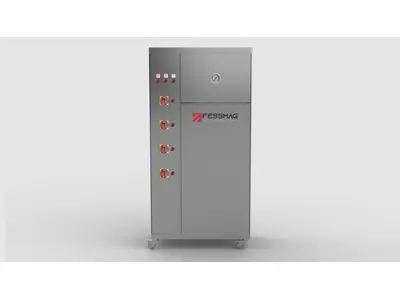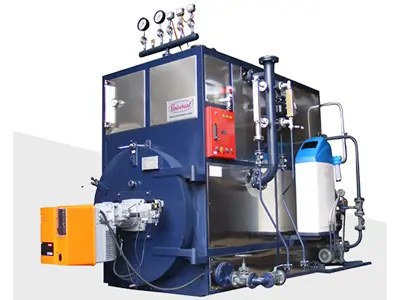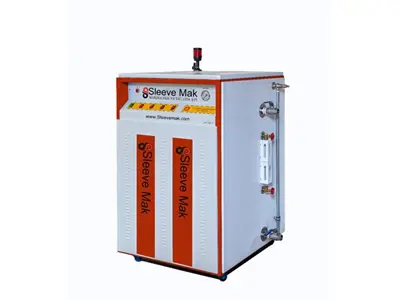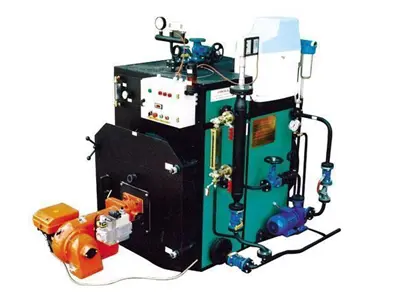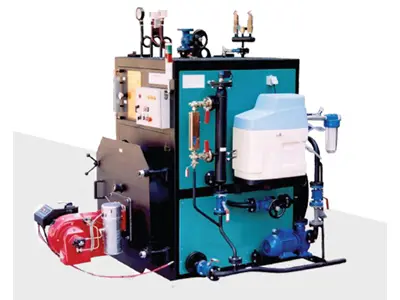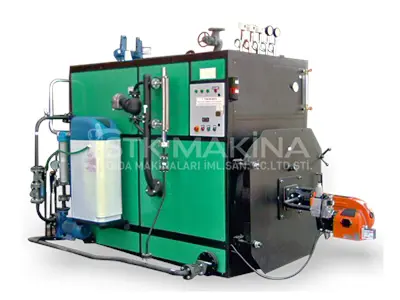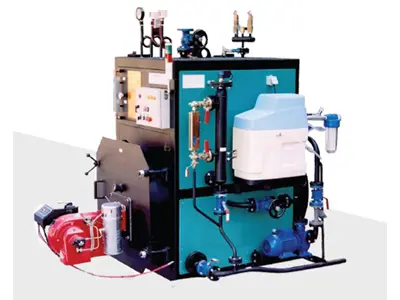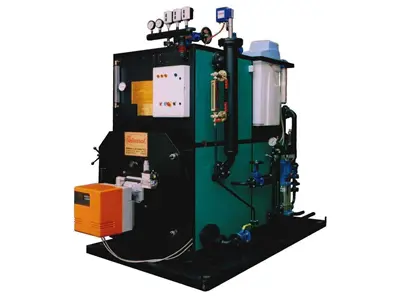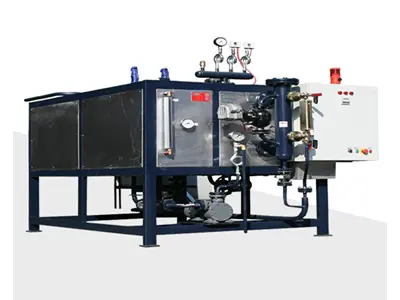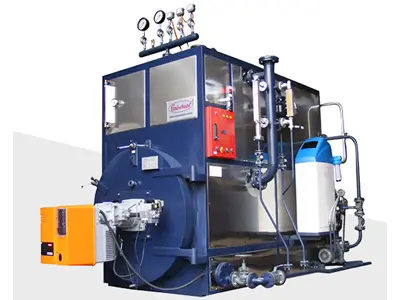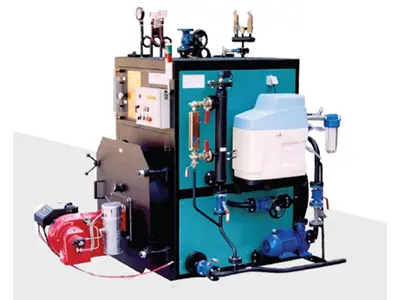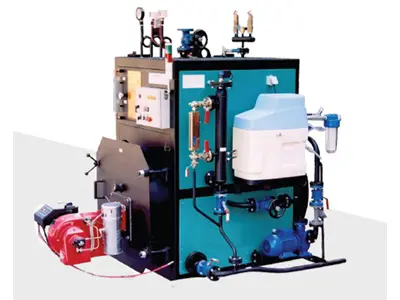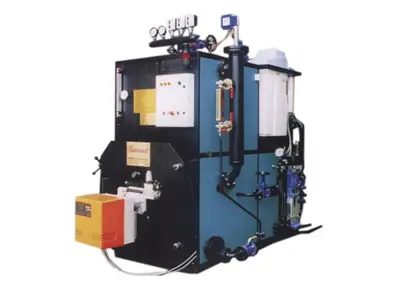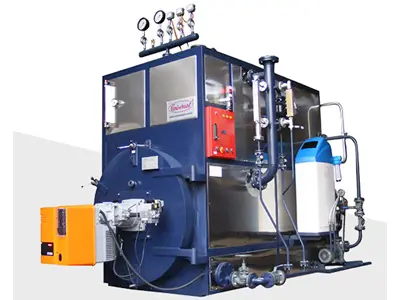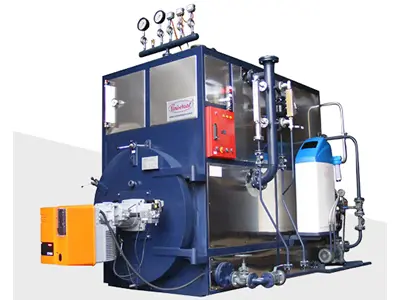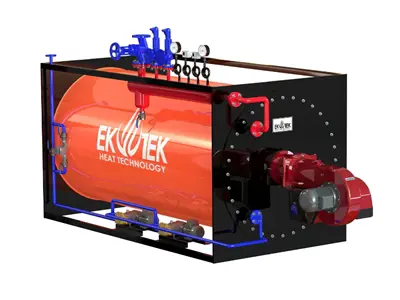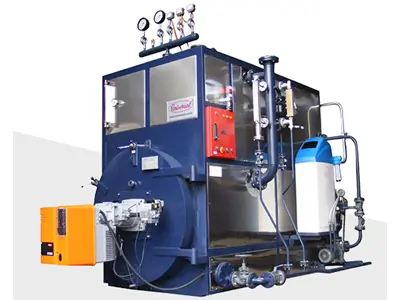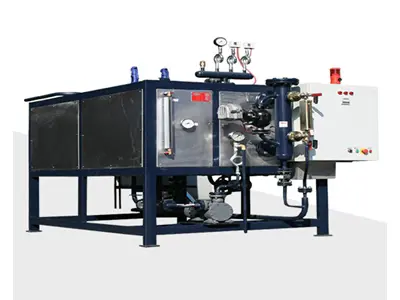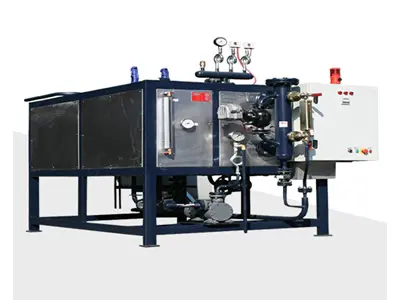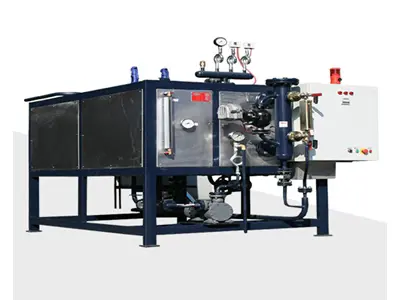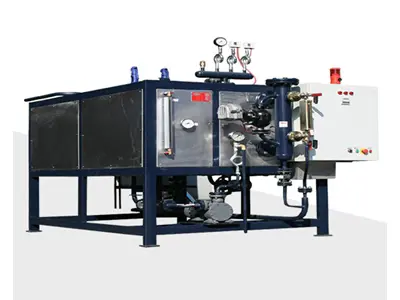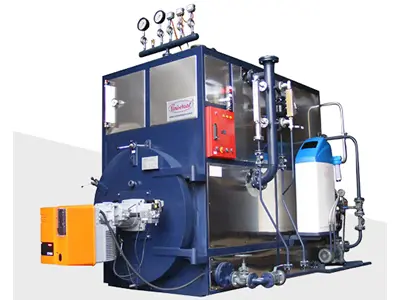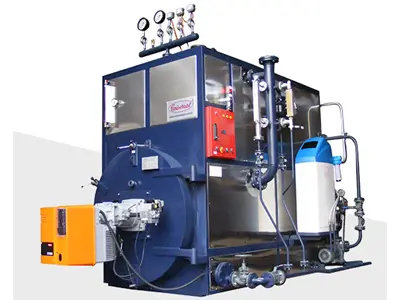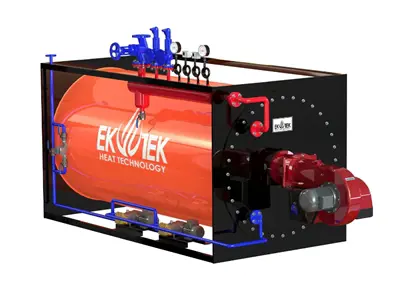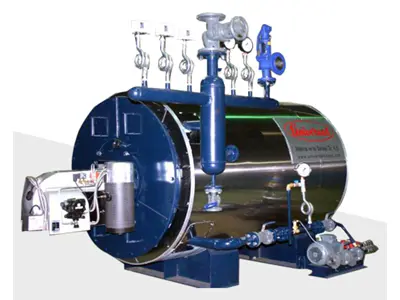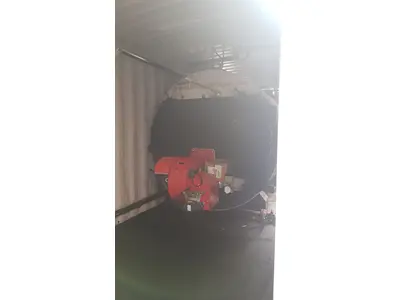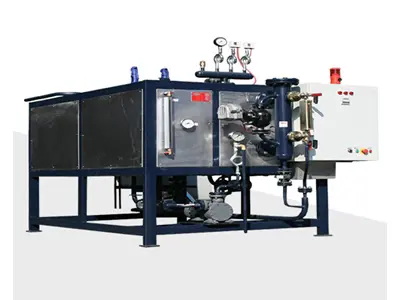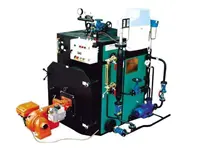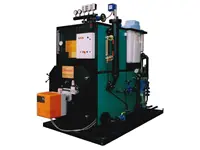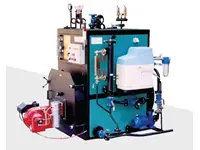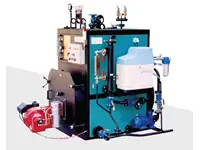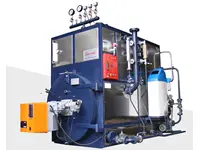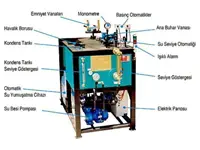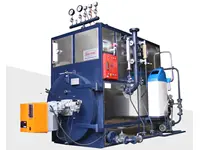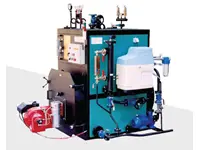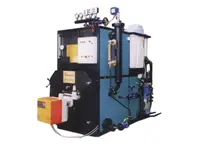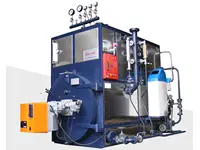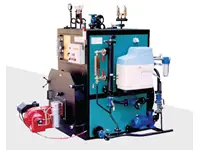SBJ kategorisinde ürün bulunamadı.
Benzer kategorideki diğer ilanlar listelenmektedir.Steam Generator Popular Products
Steam generator is a device designed to produce steam from water for industrial and commercial uses. Basically, it produces steam by heating water. This steam can then be used in various industrial processes. Steam generators are often referred to as boilers and can have a variety of designs and capacities. Typically, water is heated using a heating element or fuel source (natural gas, oil, coal, etc.) to generate steam. The resulting steam is conveyed to the area where the process will take place through a pipe or channel system. Steam generators are commonly used in various applications such as energy production, heating, sterilization, cleaning, and industrial processes. For example, in the food processing industry, steam generators can be used for cooking, sterilizing, or drying products. In the chemical industry, steam generators play an important role in speeding up chemical reactions or processing products.
\r\n\r\nHow does a Steam Generator work?
\r\n\r\nSteam generators are devices that typically create steam by heating water. Basically, water is heated using a heating element or fuel source. The heated water evaporates, and the resulting steam is conveyed to the area where the process will take place through pipes or channels passing through the generator. This steam can be used in various applications such as steam energy production, heating, sterilization, cleaning, and industrial processes. For energy production, steam generators are often used in conjunction with a turbine. This turbine allows the steam to be converted into mechanical energy and can be used for electricity production. Steam generators can have a variety of designs and capacities. Some are small-scale and portable, while others are permanently installed in large industrial facilities.
\r\n\r\nWhich industries use Steam Generators? Steam generators are widely used in various industries. They are commonly used in industries such as energy production, textile, food processing, chemical, pharmaceutical, textile, paper, and petroleum industries. In the energy production industry, steam generators are often used for electricity generation. These generators convert steam into mechanical energy by connecting it to a turbine. In the food processing industry, steam generators can be used in various processes such as cooking, sterilization, or drying products. In the chemical industry, steam generators can be used to accelerate chemical reactions or process products. In the pharmaceutical industry, steam generators play an important role in sterilization or drying of products. In the textile industry, steam generators can be used in various processes such as dyeing or processing fabrics. In the paper industry, steam generators can be used for paper production and processing. In the petroleum industry, steam generators can be used for production and refinery processes.
\r\n\r\nRegular maintenance of Steam generators ensures they operate reliably and efficiently. Maintenance tasks include regular checks of the water level, cleaning of the water tank, inspection of heating elements, cleaning of fuel filters, and checking pressure settings. Water level is a critical factor for the proper operation of the generator and should be regularly monitored. Additionally, regular cleaning of the water tank and prevention of scaling are important. Heating elements should be inspected regularly and cleaned if necessary. Fuel filters should be cleaned or replaced regularly to ensure clean and smooth fuel flow. Pressure settings should be properly adjusted for the safe operation of the generator. Furthermore, the generator may need to be tested periodically and parts replaced if necessary. However, it is not enough to just perform maintenance tasks regularly; it is also important to optimize the generator according to operating conditions and operational requirements. This may involve proper loading of the generator and keeping operating parameters at optimal levels. Regular maintenance of steam generators can reduce operating costs, increase reliability, and extend the life of the generator.
\r\n\r\nThe safety of Steam generators depends on regular maintenance, trained personnel, and proper operating procedures. It is also important to equip generators with safety features such as pressure sensors, over-temperature protections, and emergency shutdown systems. Operators need to be trained in the safe use and maintenance of the generator to ensure safety. Regular monitoring and recording of pressure and temperature levels during generator operation can help identify potential hazards. Additionally, taking safety precautions around the generator can help protect operators and other workers. These precautions may include leaving adequate space around the generator, having fire extinguishing equipment available, and establishing emergency procedures.
\r\n\r\nSeveral strategies can be implemented to increase the efficiency of Steam generators. These include regular maintenance, the use of high-efficiency fuels, the use of insulation materials, and the integration of energy recovery systems. Regular maintenance can help the generator maintain optimal performance and reduce energy consumption. Using high-efficiency fuels can reduce fuel consumption and operating costs. The use of insulation materials can reduce heat losses from the generator and increase energy efficiency. Energy recovery systems allow the generator to produce additional energy by using waste heat, thereby increasing overall energy efficiency. Additionally, running the generator at optimal capacity and under operating conditions can also increase efficiency.
\r\n\r\nThe capacity of a Steam generator is usually determined based on process requirements and production volume. Capacity is often expressed as the amount of steam generated per hour or per day. The design features of the generator, such as operating pressure and temperature, also determine the capacity. For example, a high-pressure steam generator can produce higher amounts of steam and meet more intense process requirements. When determining capacity, the maximum and minimum operating conditions of the generator should also be considered. Additionally, the generator's design life and expected process requirements should be taken into account.
\r\n\r\nTo ensure the safe use of Steam generators, several precautions should be taken. These include operator training, adherence to operating instructions, regular maintenance of the generator, and periodic checks. Additionally, monitoring pressure, temperature, and water levels during operation of the generator and not exceeding set limits are important. Safety systems that ensure the generator automatically shuts down in case of overpressure or over-temperature are crucial. Taking safety precautions around the generator to protect operators and other workers is important. Among these measures are leaving adequate space around the generator, having fire extinguishing equipment available, and establishing emergency procedures.






